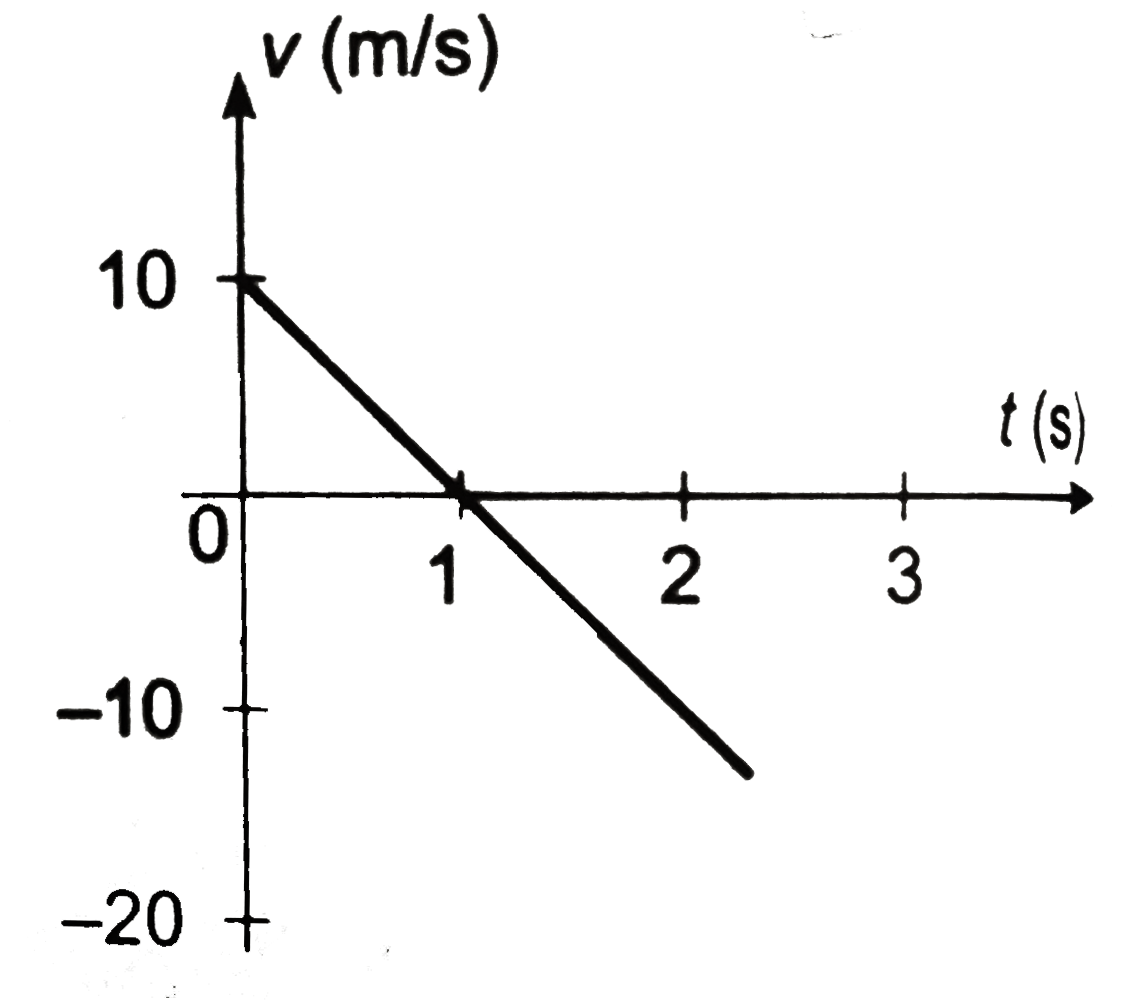Figure shows velocity time graph of a particle moving in straight line. Which of the following statement(s) is are CORRECT

Particle crosses its initial position
Speed of the particle Increases continuously
Acceleration of patticle is zero
At , of particle is zero.
The correct Answer is:A

To cross intial position, displacement is zero then, area under graph must be equal. Form to , decrease. Accerleration is equal to slope, which is constant.
At , is acceleration = slope
Topper's Solved these Questions
- TEST PAPERBOOK - ALLENCHAPTER - TEST PAPEREXERCISE - PHYSICS
4 Videos
- TEST PAPERBOOK - ALLENCHAPTER - TEST PAPEREXERCISE - PHYSICS
4 Videos
- SIMPLE HARMONIC MOTIONBOOK - ALLENCHAPTER - SIMPLE HARMONIC MOTIONEXERCISE - Example
1 Videos
- TEST PAPER 1BOOK - ALLENCHAPTER - TEST PAPER 1EXERCISE - PHYSICS
11 Videos
Similar Questions
The figure shows velocity-time graph of a particle moving along a straight line. Identify the correct statement.

View SolutionFigure shows the displacement time graph of a particle moving on the X-axis

View SolutionThe velocity time plot for a particle moving on straight line is shown in the figure.

View SolutionThe velocity time plot for a particle moving on straight line is shown in the figure.

View SolutionDisplacement time graph of a particle moving in a straight line is a shown in figure.

View SolutionVelocity displacement graph of a particle moving in a straight line is as shown in figure.

View SolutionThe displacement time graph of a particle executing S.H.M. (in straight line) is shown. Which of the following statements is true?

View SolutionFigure shows acceleration versus time graph of a particle starting from rest and moving along a straight line. Which of the following staement (s) is/are correct ?

View SolutionFigure shows the velocity of a particle moving on x-axis.

Which of the following statement is correct for the interval shown in graph?
View SolutionFrom athe velocity time graph, given in of a particle moving in a straight line, one can conclude that
 .
.
View Solution
